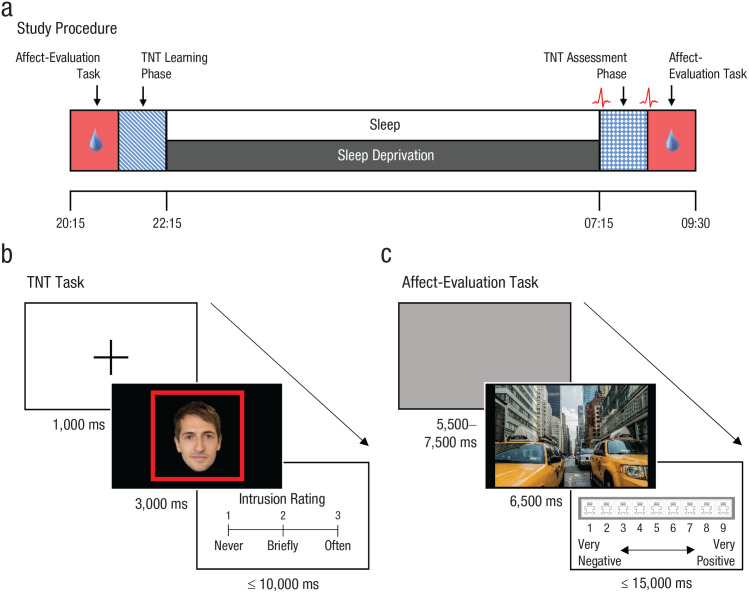Fig. 1.
Study procedures and tasks. (a) All participants completed Session 1 in the evening, which included the first of two affect-evaluation tasks and the learning phase of the think/no-think (TNT) task. Participants in the sleep group slept in the sleep laboratory for ~8 hr. Participants in the sleep-deprivation group remained awake across the night. All participants then completed Session 2, which included the assessment phase of the TNT task and the second affect-evaluation task. We collected skin-conductance responses (SCRs) to scene presentations throughout the affect-evaluation tasks. We recorded resting heart rate variability (HRV) before and after the TNT assessment phase. (b) In the critical TNT assessment phase, we presented participants with faces in red or green frames. For red-framed faces (no-think trials), we instructed participants to avoid thinking about the associated scene without generating diversionary thoughts; for green-framed faces (think trials), we instructed them to visualize the associated scene. After each trial, participants reported the extent to which they thought about the paired scene (never, briefly, or often). We considered reports of briefly or often to be intrusions. (c) In the affect-evaluation task, participants viewed negative and neutral scenes, and we asked them to provide an emotional rating for each image on a scale from 1 (very negative) to 9 (very positive).

